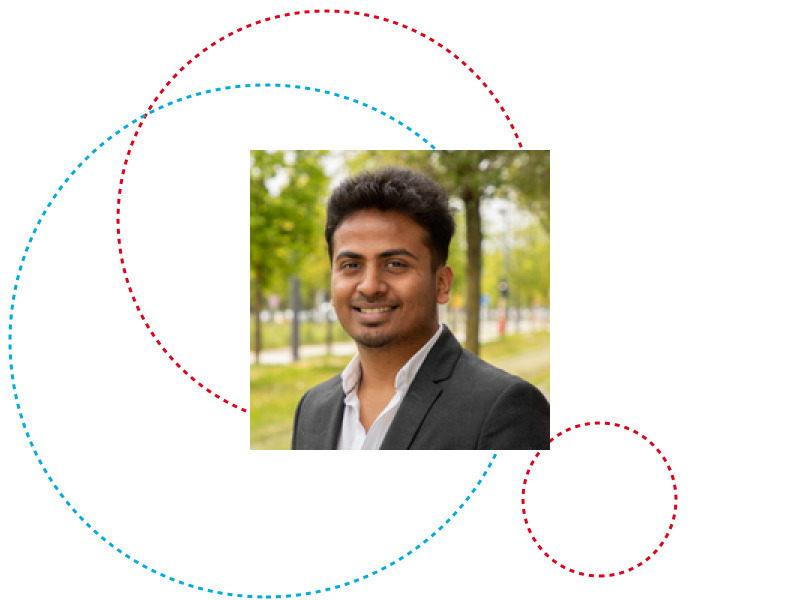You are all cordially invited to attend the PhD defence of Mr on 21st October 2022 at 9:30 am.Puneeth Jubba
The PhD defence will take place in JFK Building, seminar room E004/E005 (Metz/Nancy).
th after the PhD defence.
Let’s celebrate with us !
Members of the defence committee:
- Dr Bhavani SHANKAR, University of Luxembourg, Chairman
- Prof. Dr. Björn OTTERSTEN, University of Luxembourg, Deputy Chairman
- Prof. Dr. Symeon CHATZINOTAS, University of Luxembourg, Supervisor
- Prof. Dr. Laura COTTATELLUCCI, FAU Erlangen-Nuremberg, Germany, Member
- Dr Jens KRAUSE, SES, Luxembourg, Member
Abstract:
Satellite operators use multiple spot beams of high throughput satellite systems to provide internet services to broadband users. However, in recent years, new mobile broadband users with diverse demand requisites are growing, and satellite operators are obliged to provide services agreed in the Service Level Agreements(SLA) to remote rural locations, mid-air aeroplanes and mid-ocean ships. Furthermore, the expected demand is spatio-temporal which varies along the geographical location of the mobile users with time and hence, creating more dynamic, non-uniformly distributed, and time sensitive demand profiles. However, the current satellite systems are only designed to perform similarly irrespective of the changes in demand profiles. Hence, a practical approach to meet such heterogeneous demand is to design adaptive systems by exploiting the advancements in recently developed technologies such as precoding, active antenna array, digital beamforming networks, digital transparent payload and onboard signal processing.
Accordingly, in this work, we investigate and develop advanced demand-based resource optimization modules that fit future payload capabilities and satisfy the satellite operators’ interests. Furthermore, instead of boosting the satellite throughput (capacity maximization), the goal is to optimize the available resources such that the satellite offered capacity on the ground continuously matches the geographic distribution of the traffic demand and follows its variations in time. However, we can introduce adaptability at multiple levels of the transmission chain of the satellite system, either with long term flexibility (optimization over frequency, time, power, beam pattern and footprint) or short term flexibility (optimization over user scheduling). These techniques can be optimized as either standalone or in parallel or even jointly for maximum demand satisfaction. However, in the scope of this thesis, we have designed real time optimizations only for some of the radio resource schemes.
Firstly, we explore beam densification, where by increasing the number of beams, we improve the antenna gain values at the high demand hot-spot regions. However, such increase in the number of beams also increase the interbeam interference and badly affects SINR performance. Hence, in the first part of chapter 2 of this thesis, we focus on finding an optimal number of beams for given high demand hot-spot region of a demand distribution profile. Also, steering the beams towards high demand regions, further increase the demand satisfaction. However, the positioning of the beams need to be carefully planned. On one hand, closely placed beams result in poor SINR performance. On the other hand, beams that are placed far away will have poor antenna gain values for the users away from the beam centers. Hence, in the second part of chapter 2, we focus on finding optimized beam positions for maximum demand satisfaction in high demand hot-spot regions. Also, we propose a dynamic frequency-color coding strategy for efficient spectrum and interference management in demand-driven adaptive systems.
Another solution is the proposed so-called Adaptive Multi-beam Pattern and Footprint (AMPF) design, where we fix the number of beams and based on the demand profile, we configure adaptive beam shapes and sizes along with their positions. Such an approach shall distribute the total demand across all the beams more evenly avoiding overloaded or underused beams. Such optimization was attempted in chapter 3 using cluster analysis. Furthermore, demand satisfaction at both beam and user level was achieved by carefully performing demand driven user scheduling. On one hand, scheduling most orthogonal users at the same time may yield better capacity but may not provide demand satisfaction. This is majorly because users with high demand need to be scheduled more often in comparison to users with low demand irrespective of channel orthogonality. On the other hand, scheduling users with high demand which are least orthogonal create strong interbeam interference and affect precoding performance. Accordingly, two demand driven scheduling algorithms are discussed in chapter 4.
Lastly, in chapter 5, we verified the impact of parallel implementation of two different demand based optimization techniques such as AMPF design and demand-based user scheduling. Evidently, numerical results presented throughout this thesis validate the effectiveness of the proposed demand based optimization techniques in terms of demand matching performance compared to the conventional non-demand based approaches.
